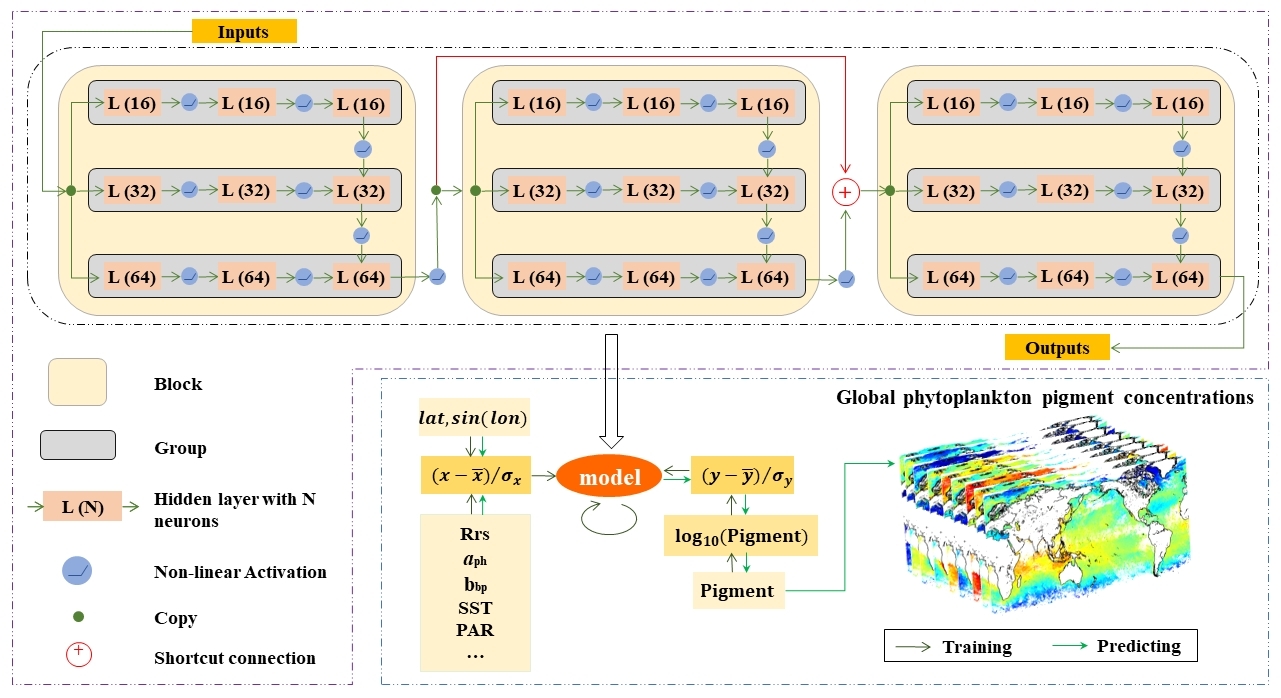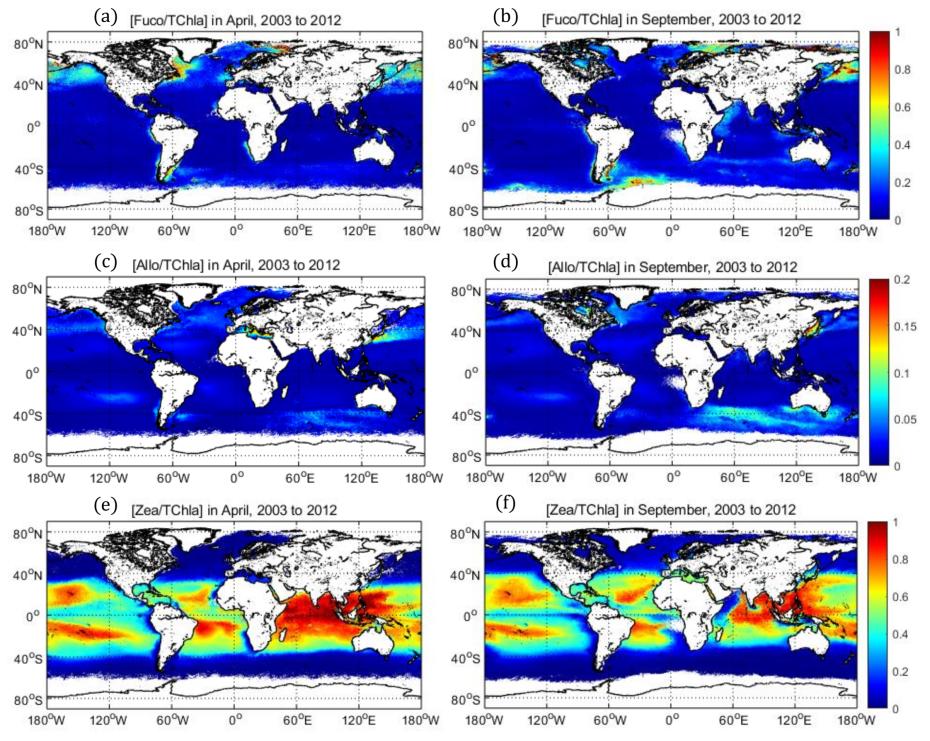The community structure of phytoplankton serves as a significant indicator, reflecting changes in the marine environment and aiding our understanding of the driving factors behind ecological evolution. Quantifying pigment concentration in phytoplankton is crucial for comprehensive assessment of taxonomic classification and community structure.
Recently, the research team led by Prof. LI Xiaofeng from the Institute of Oceanology of the Chinese Academy of Sciences (IOCAS) has made significant progress in the inversion of global phytoplankton pigment concentrations using deep learning algorithms.
The study was published in Remote Sensing of Environment on May. 19.
This study presents a deep-learning-based model (DL-PPCE model) for estimating concentrations of 17 different phytoplankton pigments globally using satellite data. The model inputs include ocean color parameters, satellite-derived environmental parameters, and the slope of above-surface remote-sensing reflectance. The model was validated against high performance liquid chromatography (HPLC) data and was found to be advantageous for analyzing the phytoplankton community dynamics on a large spatiotemporal scale. Using the established DL-PPCE model, the time series analysis of global pigment concentrations retrieved by Moderate-resolution Imaging Spectroradiometer (MODIS) during the period of 2003-2021 showed that the prokaryotes-dominated area extended eastward from180°E to 150°W during the 2015/2016 El Nino event. From 2003 to 2021, prokaryotic abundance was positively correlated with El Nino intensity but negatively correlated with the abundance of the entire phytoplankton community.
Ocean color remote sensing enables the retrieval of phytoplankton absorption, directly linked to pigment concentration. "However, the simultaneous retrieval of multiple pigment concentrations globally is challenging due to optical property variability in seawater and the packaging effect on phytoplankton absorption," said LI Xiaolong, first author of the study.
"In our study, we employ a novel approach to estimate global phytoplankton pigment concentrations," said Prof. LI, corresponding author of the study. "By avoiding assumptions about pigment absorption spectra and employing deep learning, we established non-linear relationships between remote sensing variables and phytoplankton pigment concentrations. This approach yielded high accuracy in estimating pigment concentrations."

Fig. 1 The framework of DL-PPCE model.

Fig. 2 Global distributions of estimated [Pigment/TChla] concentration ratios in April and September averaged over 2003 - 2012. [Fuco/TChla] (a-b), [Allo/TChla] (c-d), and [Zea/TChla] (e-f).
Xiaolong Li, Yi Yang, Joji Ishizaka and Xiaofeng Li*. (2023). Global estimation of phytoplankton pigment concentrations from satellite data using a deep-learning-based model. Remote Sensing of Environment, 294, 113628.
(Text by LI Xiaolong)
Media Contact:
ZHANG Yiyi
Institute of Oceanology
E-mail: zhangyiyi@qdio.ac.cn
(Editor: ZHANG Yiyi)

